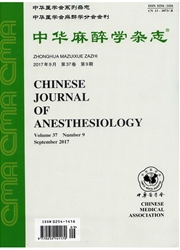

 中文摘要:
中文摘要:
目的 构建转IκBα突变型基因永生化神经前体细胞株(INPCs)。方法 限制性内切酶双酶切含IκBα突变型基因的质粒pBluescript/CNP/IκBαM,得到目的基因片断IκBα突变型基因,克隆入真核表达载体pcDNA3.1中,酶切反应及DNA测序鉴定重组载体pcDNA3.1/IκBαM。利用脂质体介导的基因转染技术分别将载体pcDNA3.1及pcDNA3.1/IκBαM转染INPCs,经G418(150μg/ml)筛选,挑选阳性克隆并扩大培养,2周后用RT—PCR和Western blot检测阳性细胞株中IκBα的表达,用受NF—κB特异性启动表达的荧光素酶报告基因检测阳性细胞株中NF—κB的活性。结果 经限制性酶切分析及DNA测序证实重组载体pcDNA3.1/IκBαM中含有IκBα突变型基因,转pcDNA3.1/IκBαM永生化神经前体细胞中IκBα的总mRNA表达增高,Western blot可检测到突变型IκBα蛋白的表达,且细胞中NF—κB活性下降。结论 成功构建了转IκBα突变型基因INPCs,该细胞株能通过IκBα突变型基因的表达来下调NF—κB的活性。
 英文摘要:
英文摘要:
Objective To establish immortalized neural progenitor cell strain transfected with mutated IκBα gene and determine the activity of NF-κB in the cell strain. Methods The cloning vector and the eukaryotic expression vector of pcDNA3.1 was digested by restriction enzyme. Then the target DNA fragment (mutated IκBα gene ) was purified and cloned properly into pcDNA3, lby T4 ligase. The recombinant plasmids pcDNA3.1/IκBαM were identified by endonucleases digestion and sequencing. The immortalized neural progenitor cell strain was transfected with plasmids pcDNA3.1 or pcDNA3.1/IκBαM. Cells containing stable transformants were selected by the ability of resistance to G418 (150 μg· ml^-1 ) and isolated with a limited dilution. Semi-quantitive RT-PCR and Western blot were used to detect the expression of IκBα mRNA and protein. Luciferase assay system was used to detect the activity of IκBα in the cells transfected with pcDNA3.1 or pcDNA3.1/IκBαM.Results It was established by endonuclease digestion and sequencing that the mutated IκBα gene was recombinated to the enkaryotic expression vector of pcDNA3.1 successfully. The total mRNA expression of IκBα was highly increased in immortalized neural progenitor cell strain transfected with pcDNA3.1/IκBαM. The protein of mutated IκBα in these cells can be detected and the activity of NF-κB was down-regulated in these cells. Conclusion Immortalized neural progenitor cell strain transfected' with mutated IκBα gene is established. The mutated IκBα gene is highly expressed and activity of NF-κB is down-regulated in these cells.
 同期刊论文项目
同期刊论文项目
 同项目期刊论文
同项目期刊论文
 期刊信息
期刊信息
